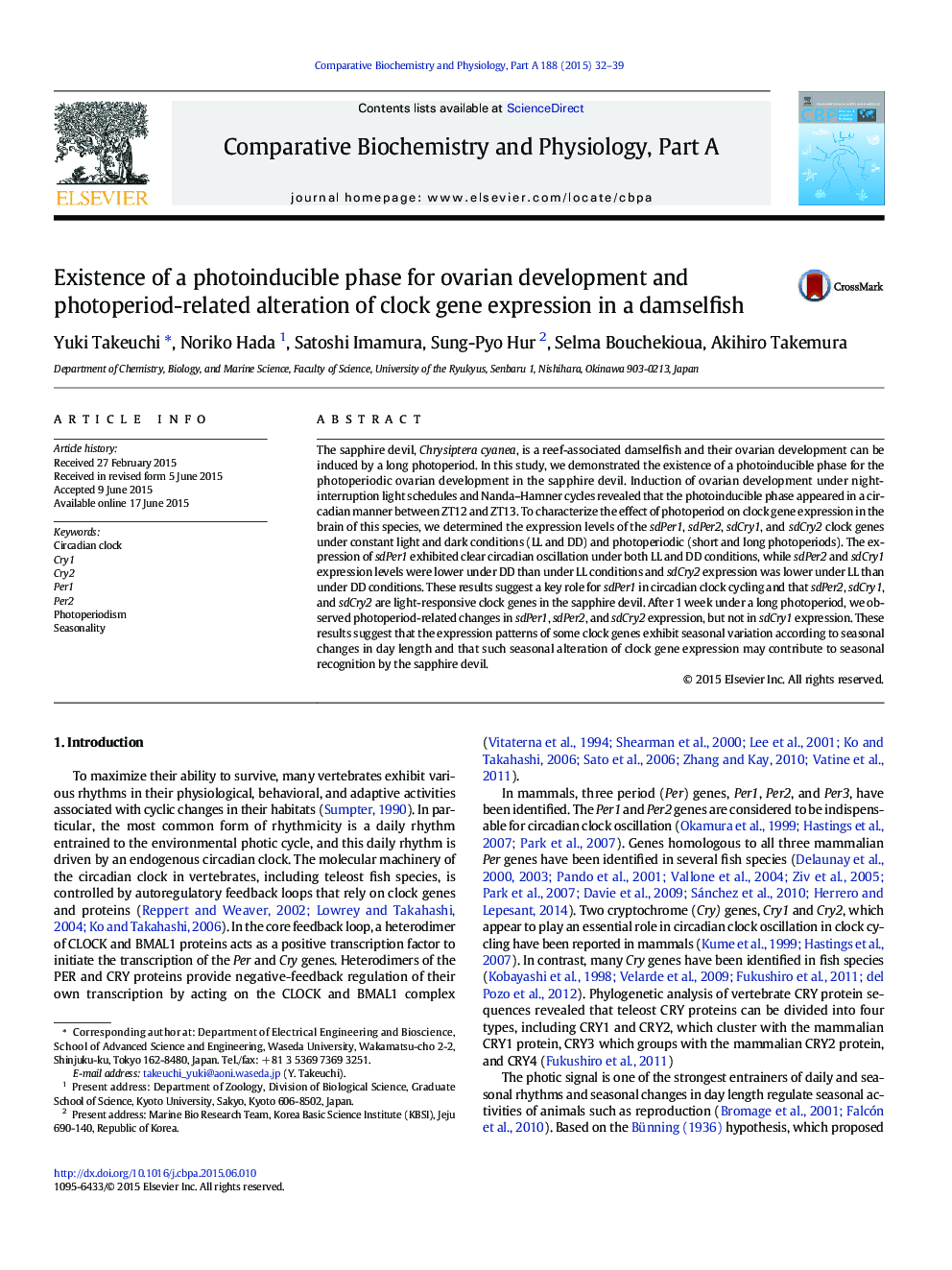| Article ID | Journal | Published Year | Pages | File Type |
|---|---|---|---|---|
| 1971912 | Comparative Biochemistry and Physiology Part A: Molecular & Integrative Physiology | 2015 | 8 Pages |
The sapphire devil, Chrysiptera cyanea, is a reef-associated damselfish and their ovarian development can be induced by a long photoperiod. In this study, we demonstrated the existence of a photoinducible phase for the photoperiodic ovarian development in the sapphire devil. Induction of ovarian development under night-interruption light schedules and Nanda–Hamner cycles revealed that the photoinducible phase appeared in a circadian manner between ZT12 and ZT13. To characterize the effect of photoperiod on clock gene expression in the brain of this species, we determined the expression levels of the sdPer1, sdPer2, sdCry1, and sdCry2 clock genes under constant light and dark conditions (LL and DD) and photoperiodic (short and long photoperiods). The expression of sdPer1 exhibited clear circadian oscillation under both LL and DD conditions, while sdPer2 and sdCry1 expression levels were lower under DD than under LL conditions and sdCry2 expression was lower under LL than under DD conditions. These results suggest a key role for sdPer1 in circadian clock cycling and that sdPer2, sdCry1, and sdCry2 are light-responsive clock genes in the sapphire devil. After 1 week under a long photoperiod, we observed photoperiod-related changes in sdPer1, sdPer2, and sdCry2 expression, but not in sdCry1 expression. These results suggest that the expression patterns of some clock genes exhibit seasonal variation according to seasonal changes in day length and that such seasonal alteration of clock gene expression may contribute to seasonal recognition by the sapphire devil.
